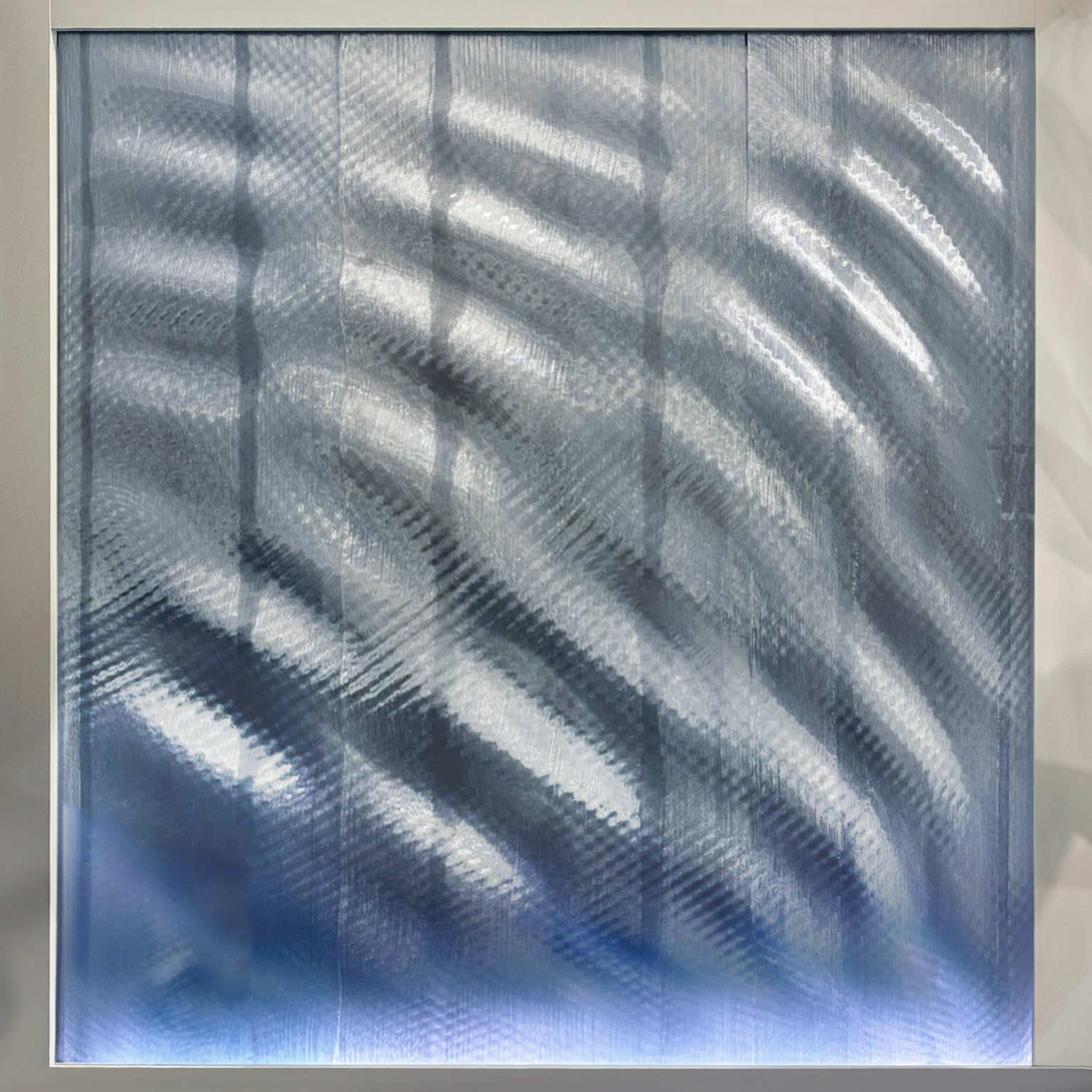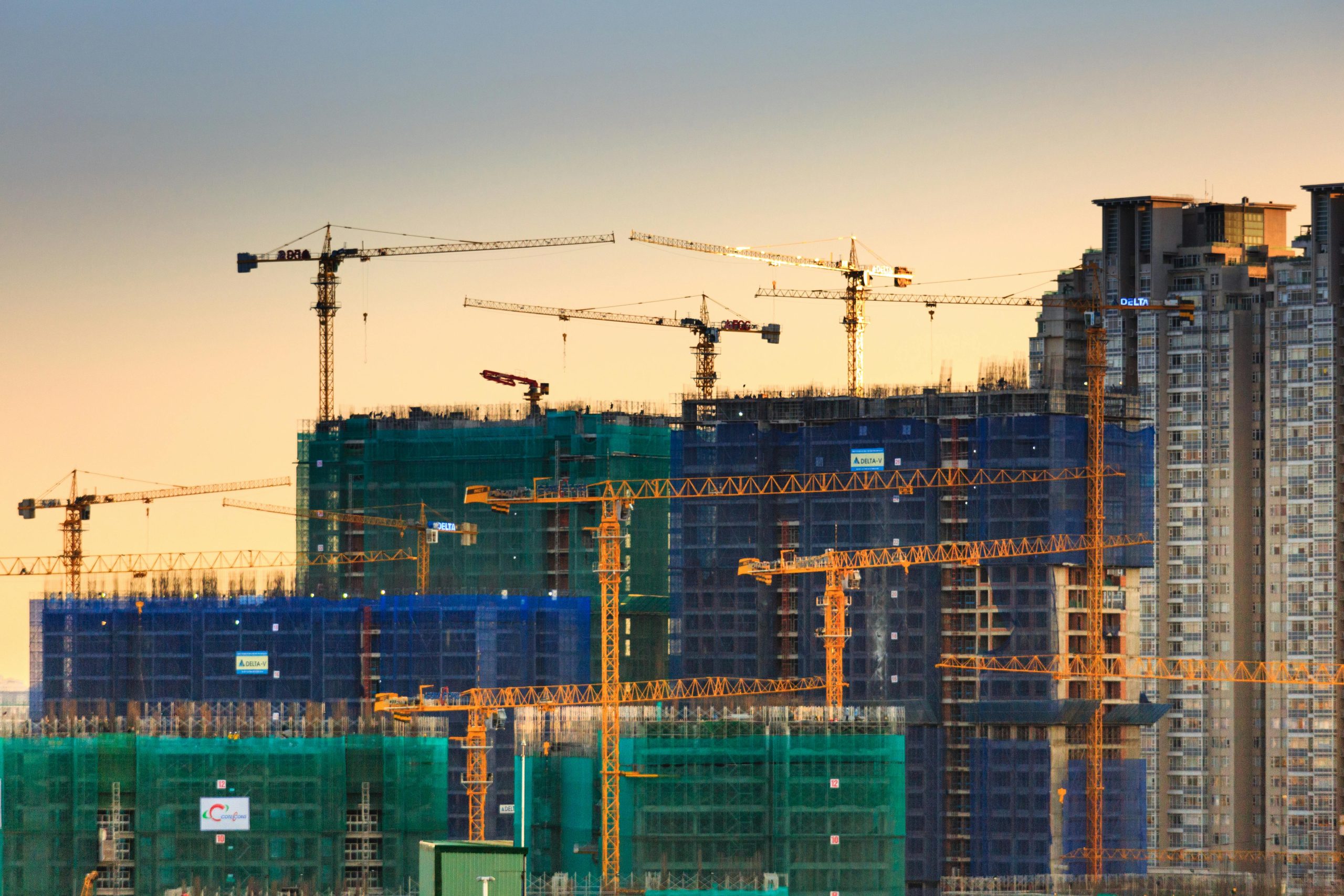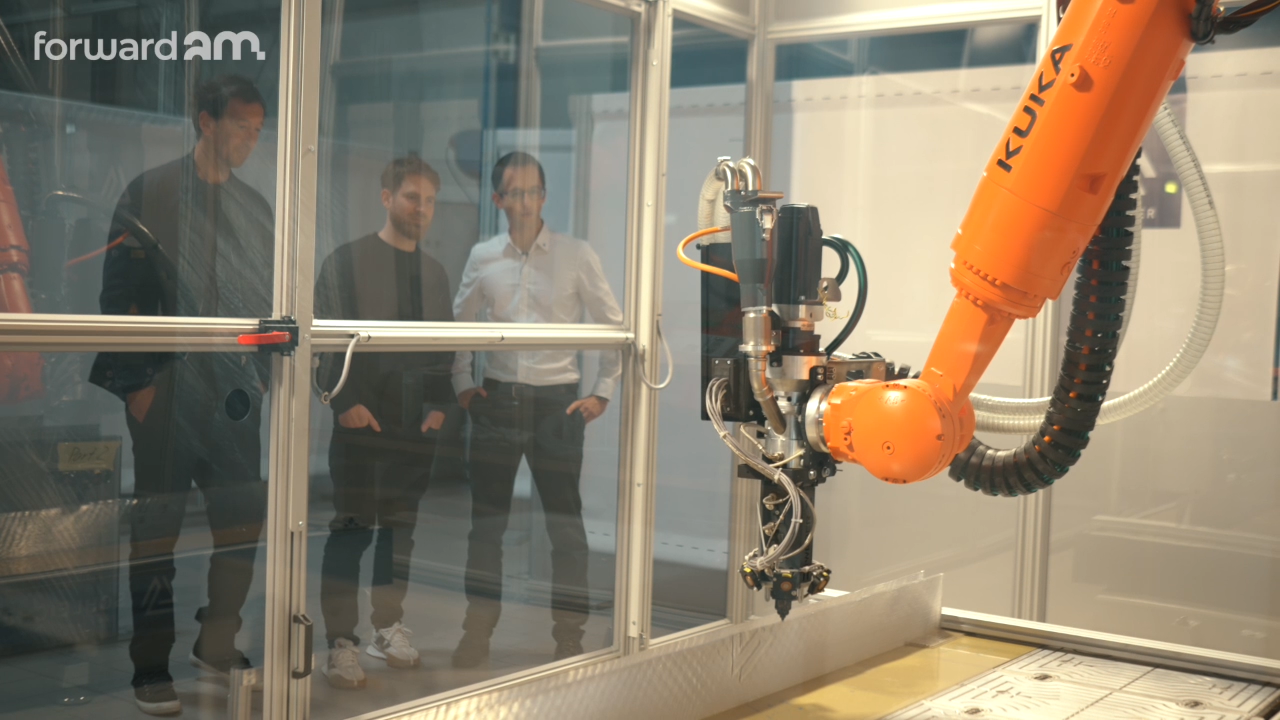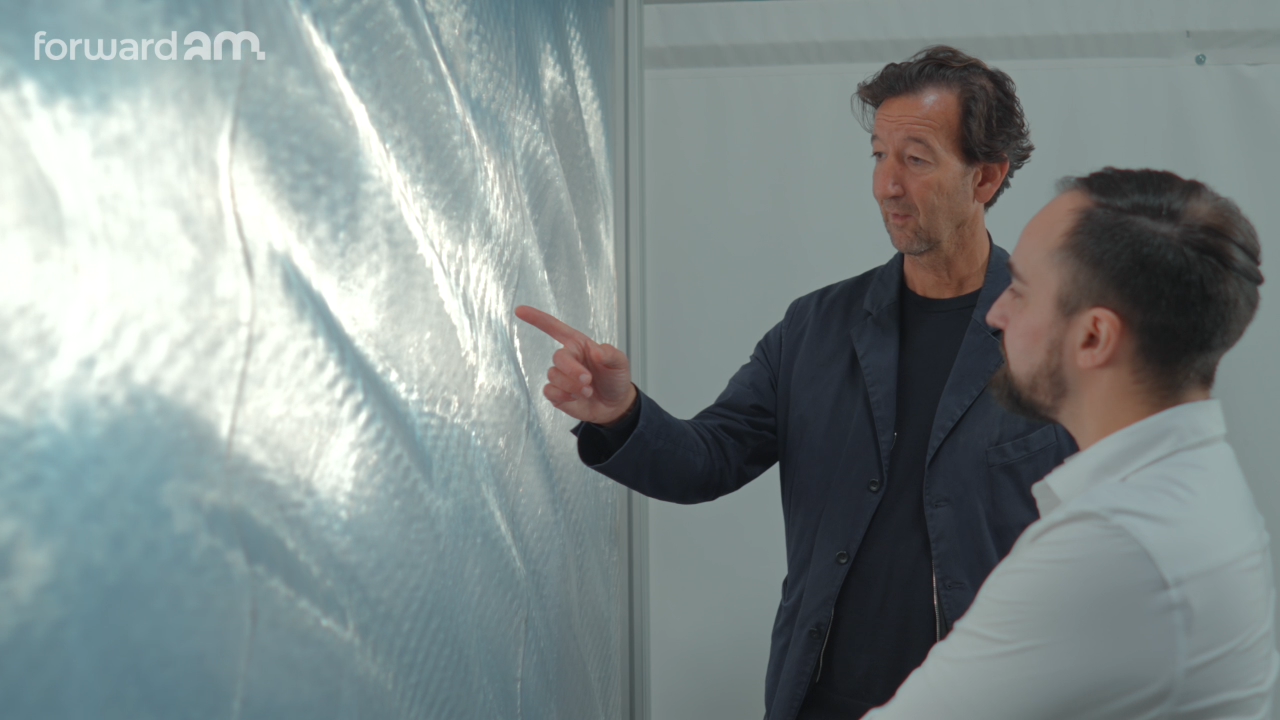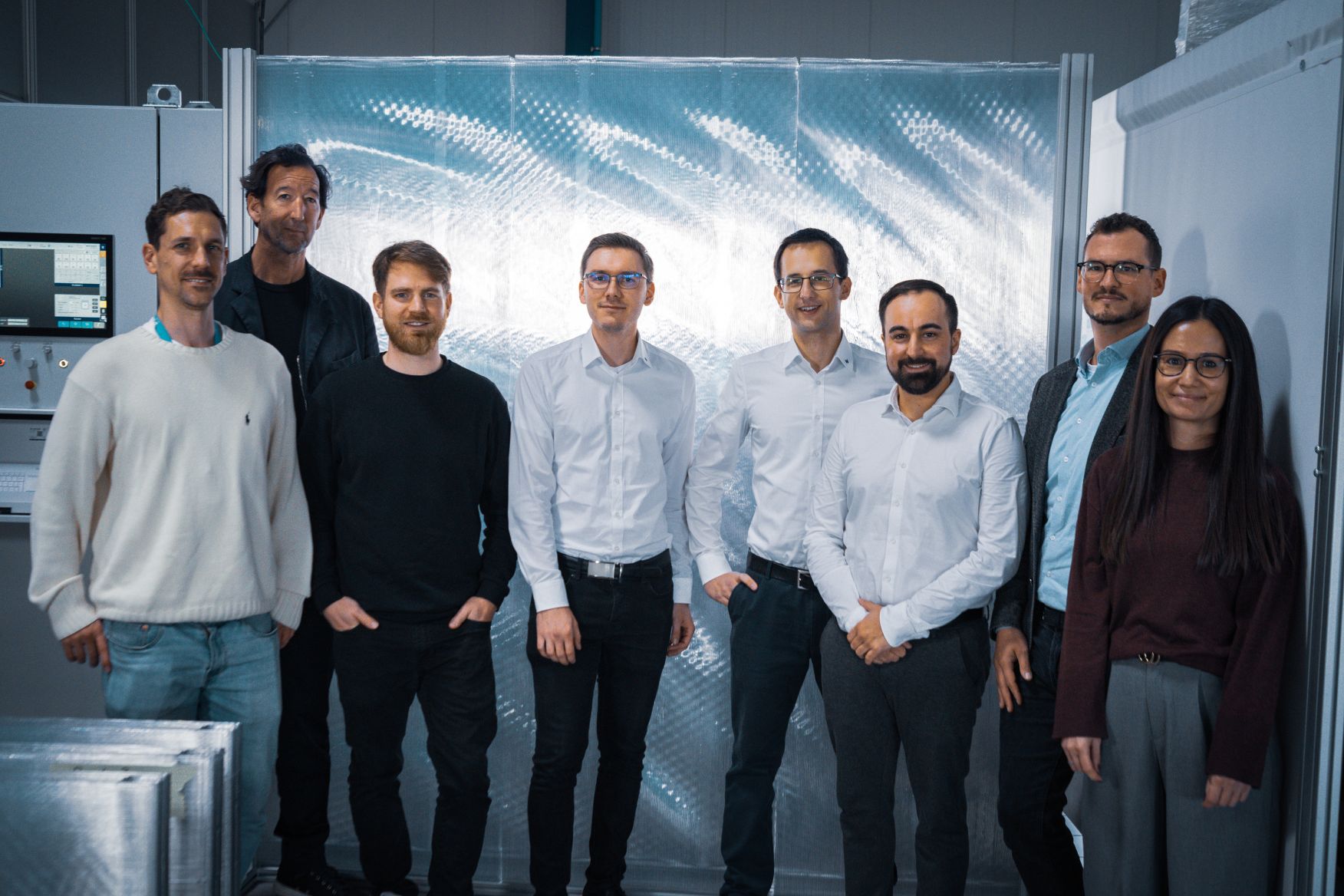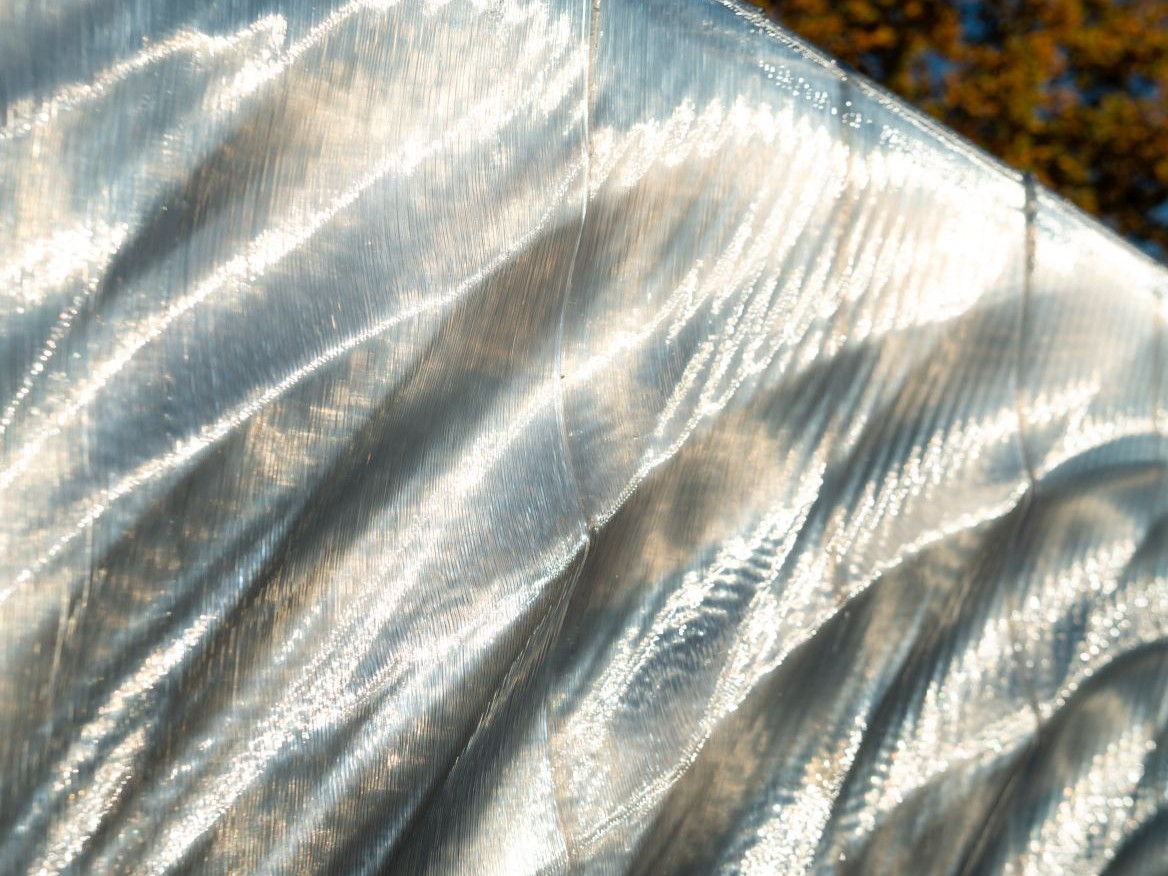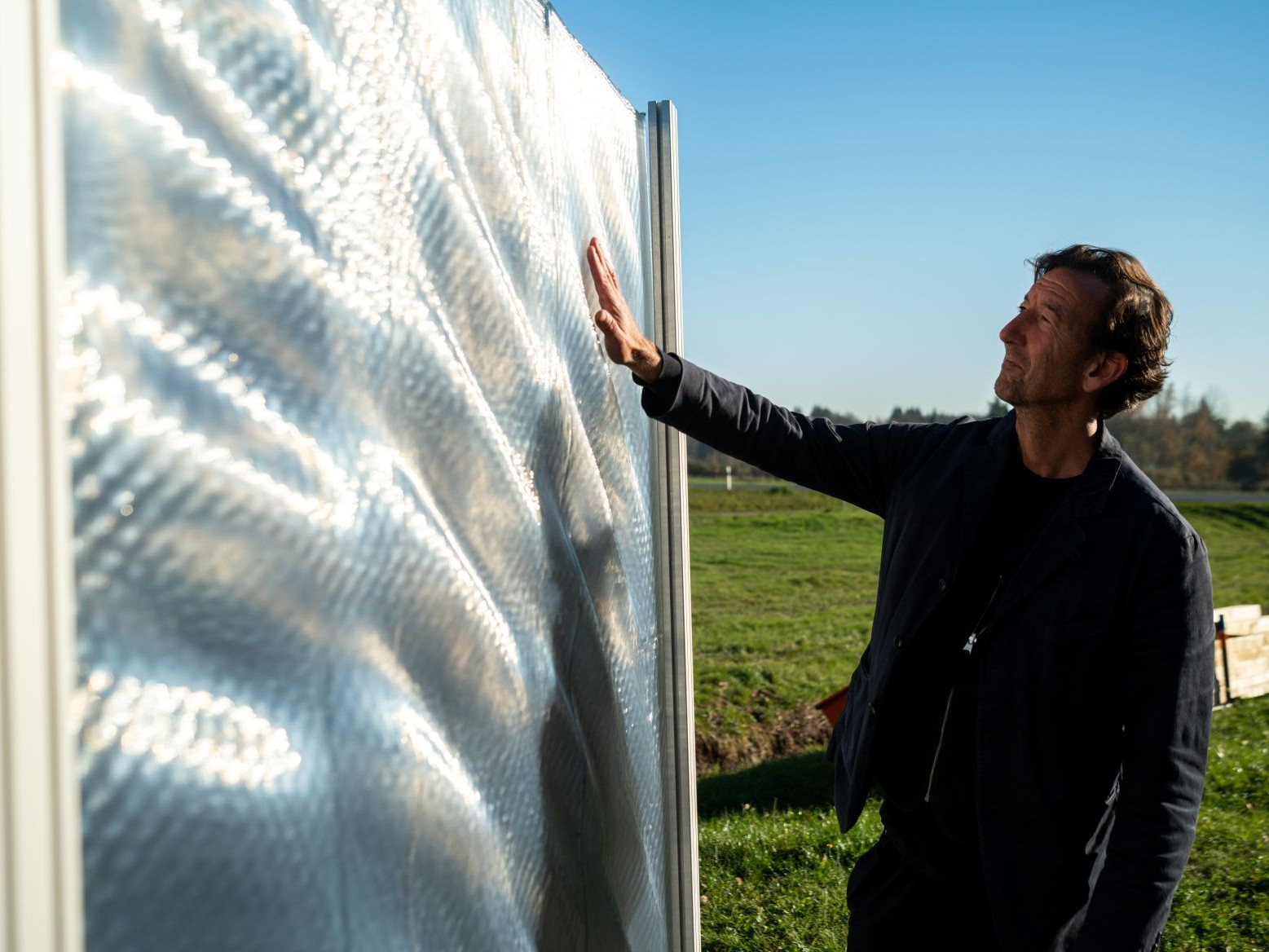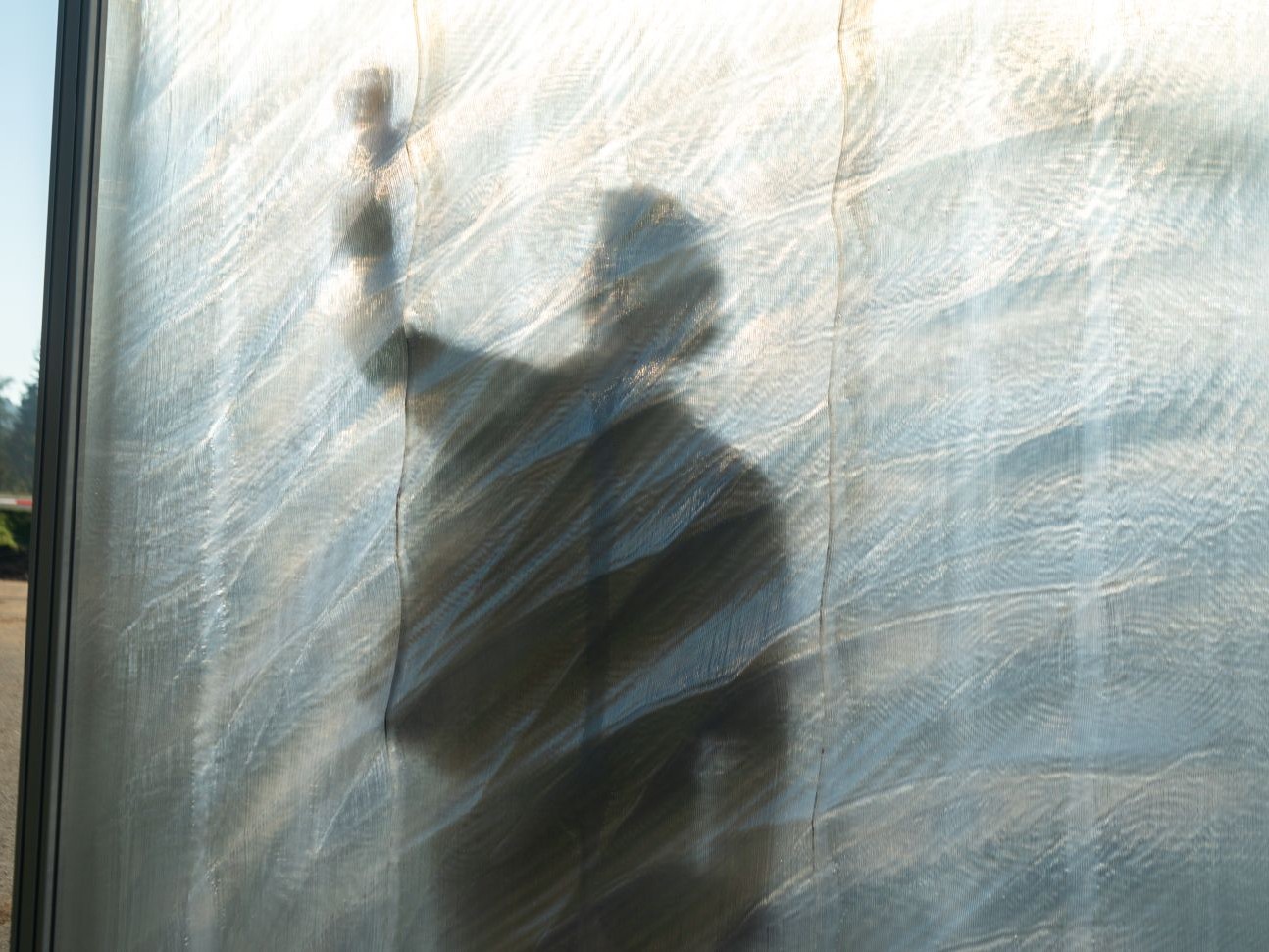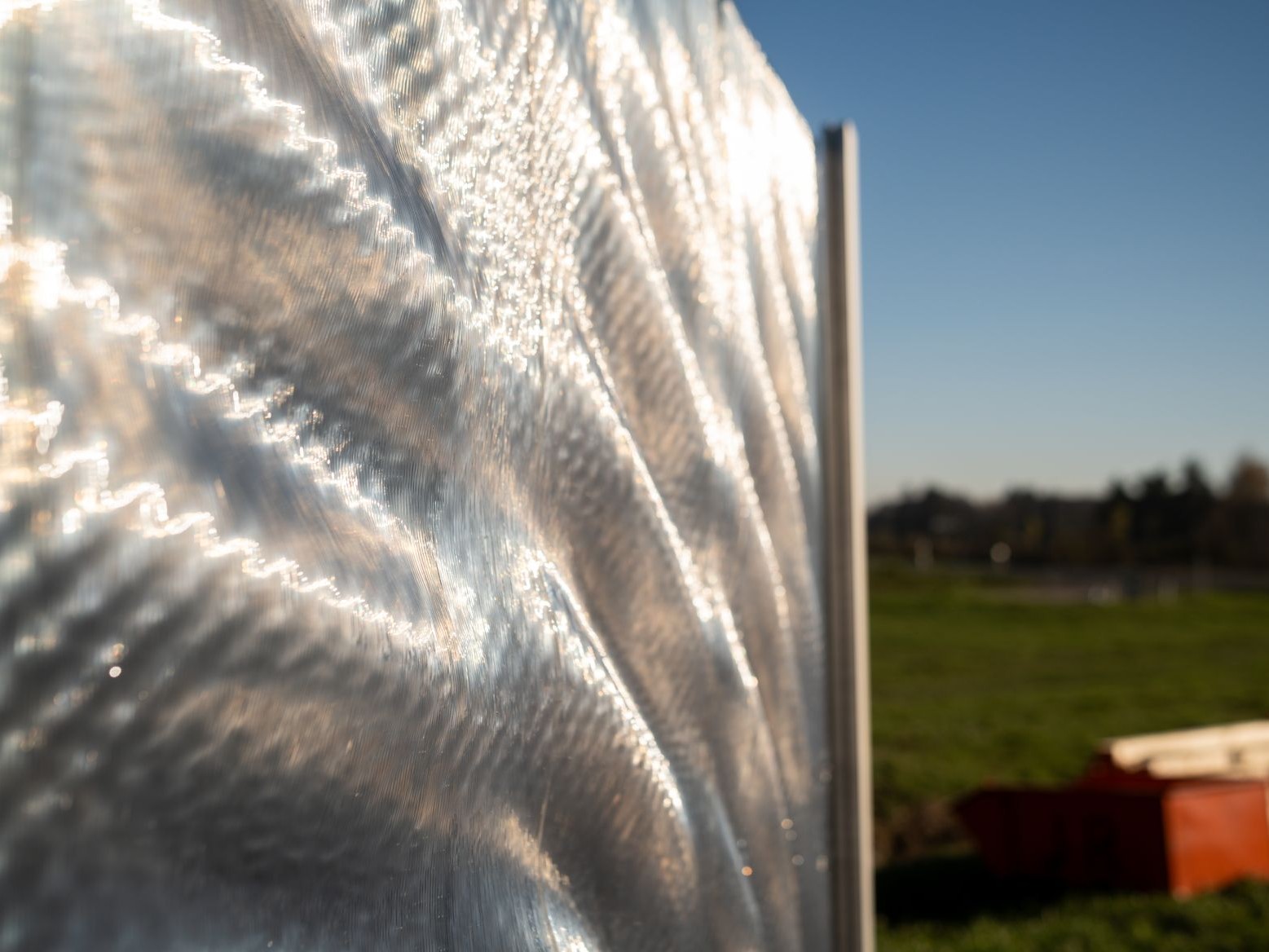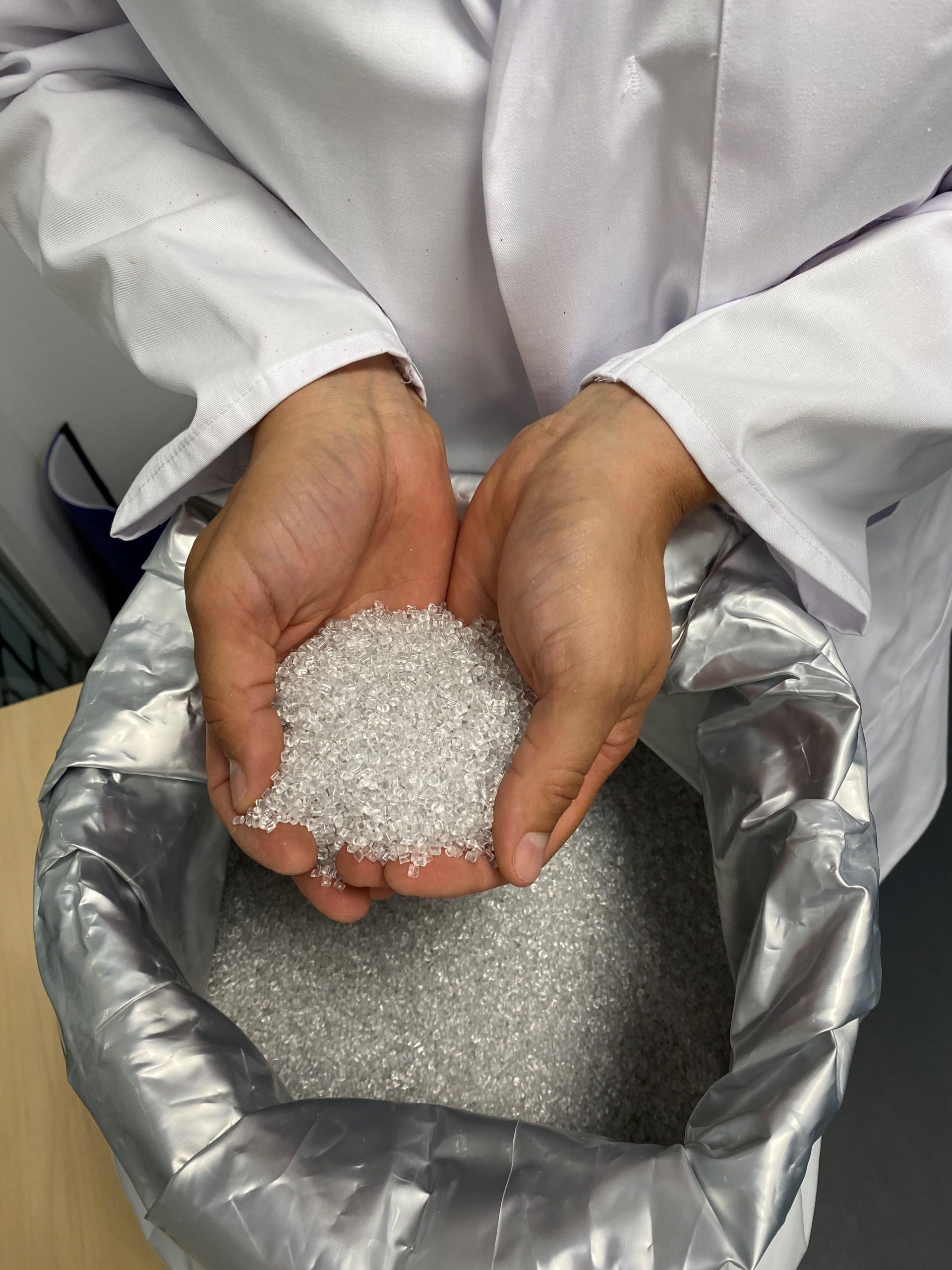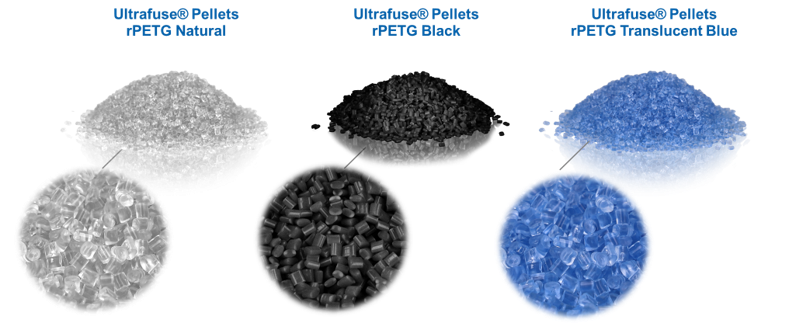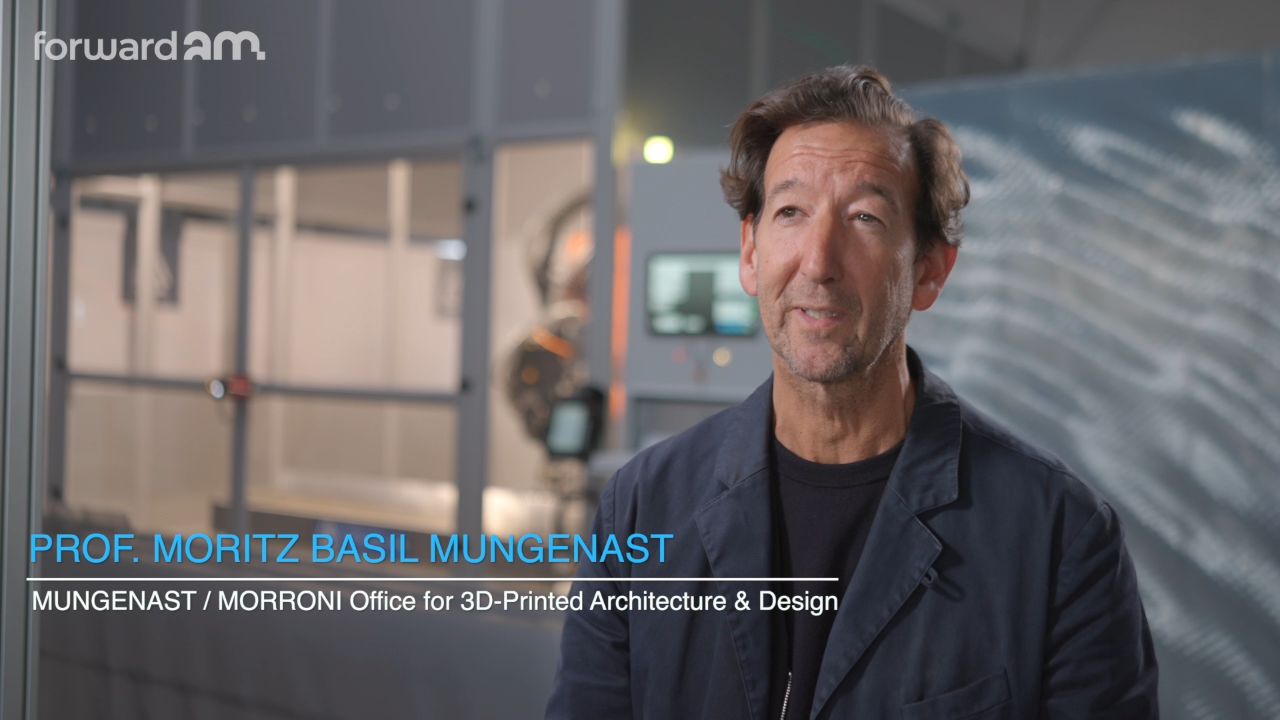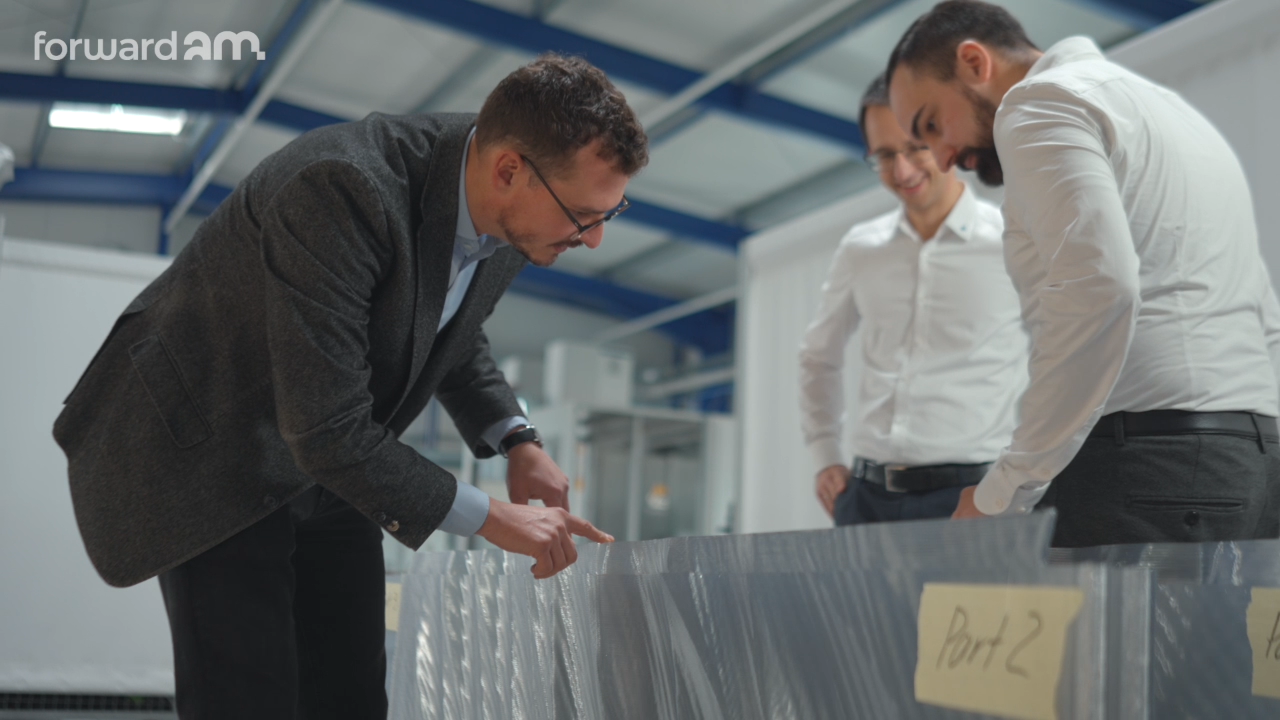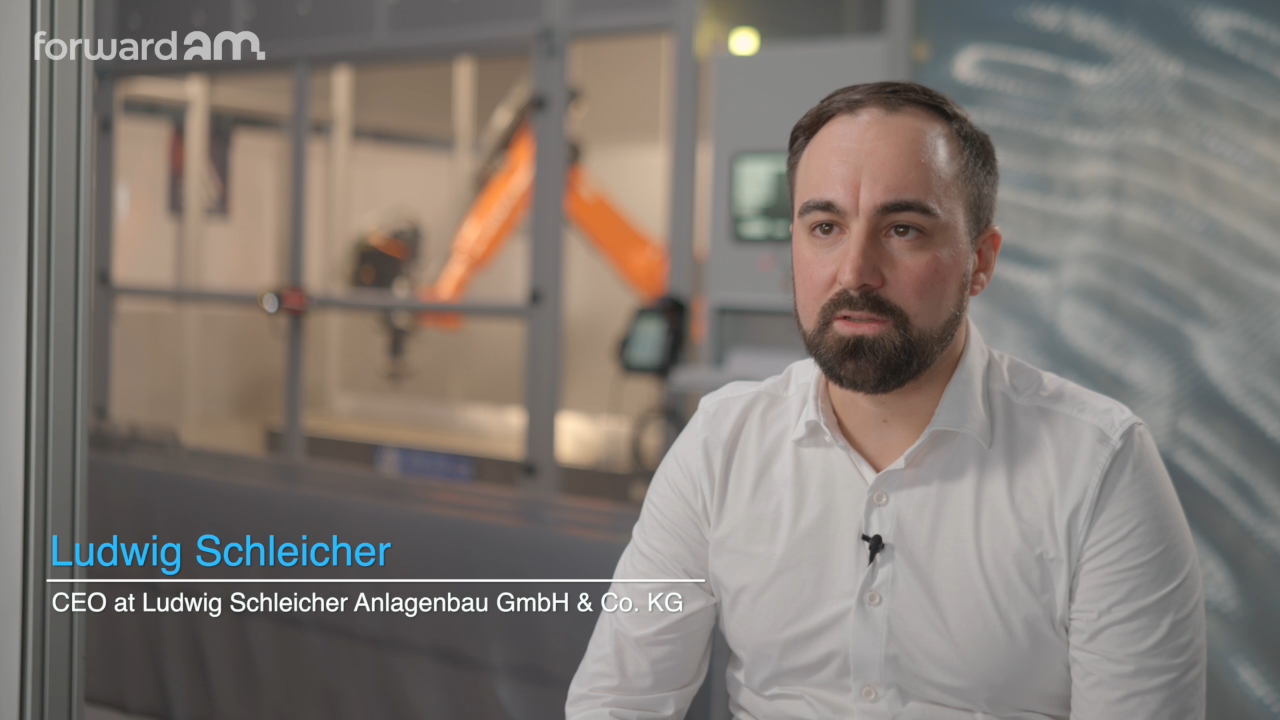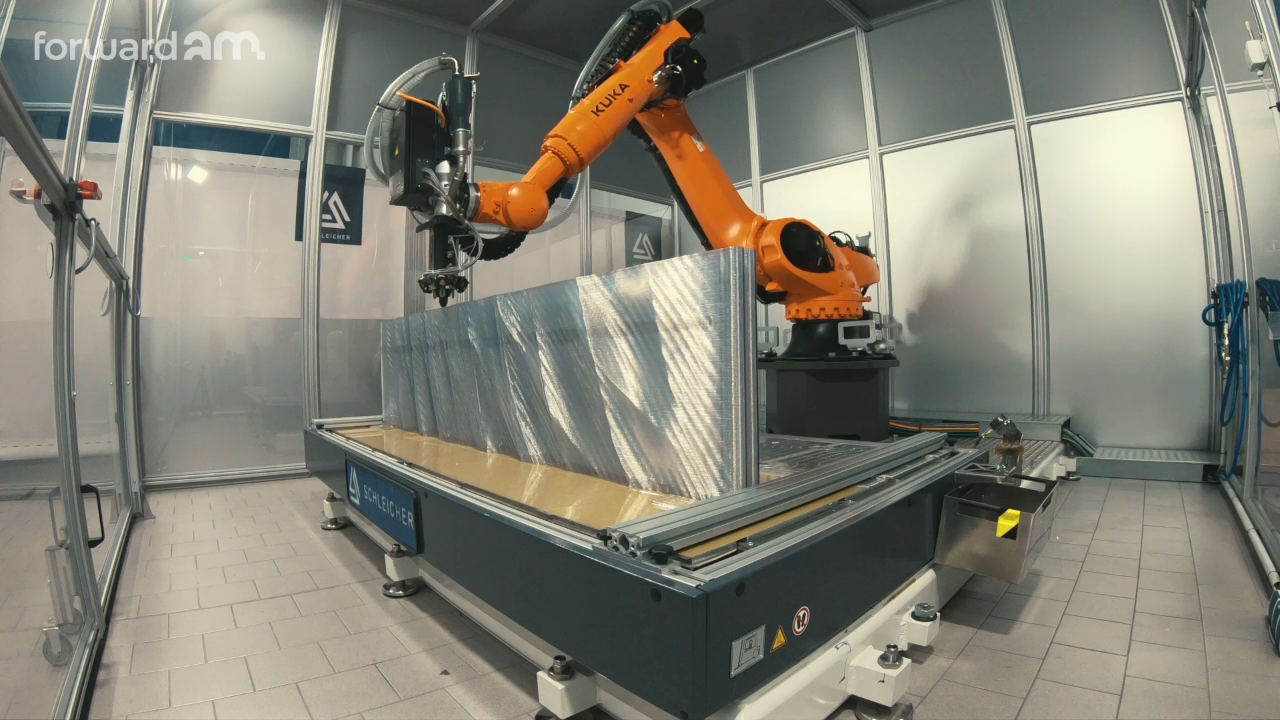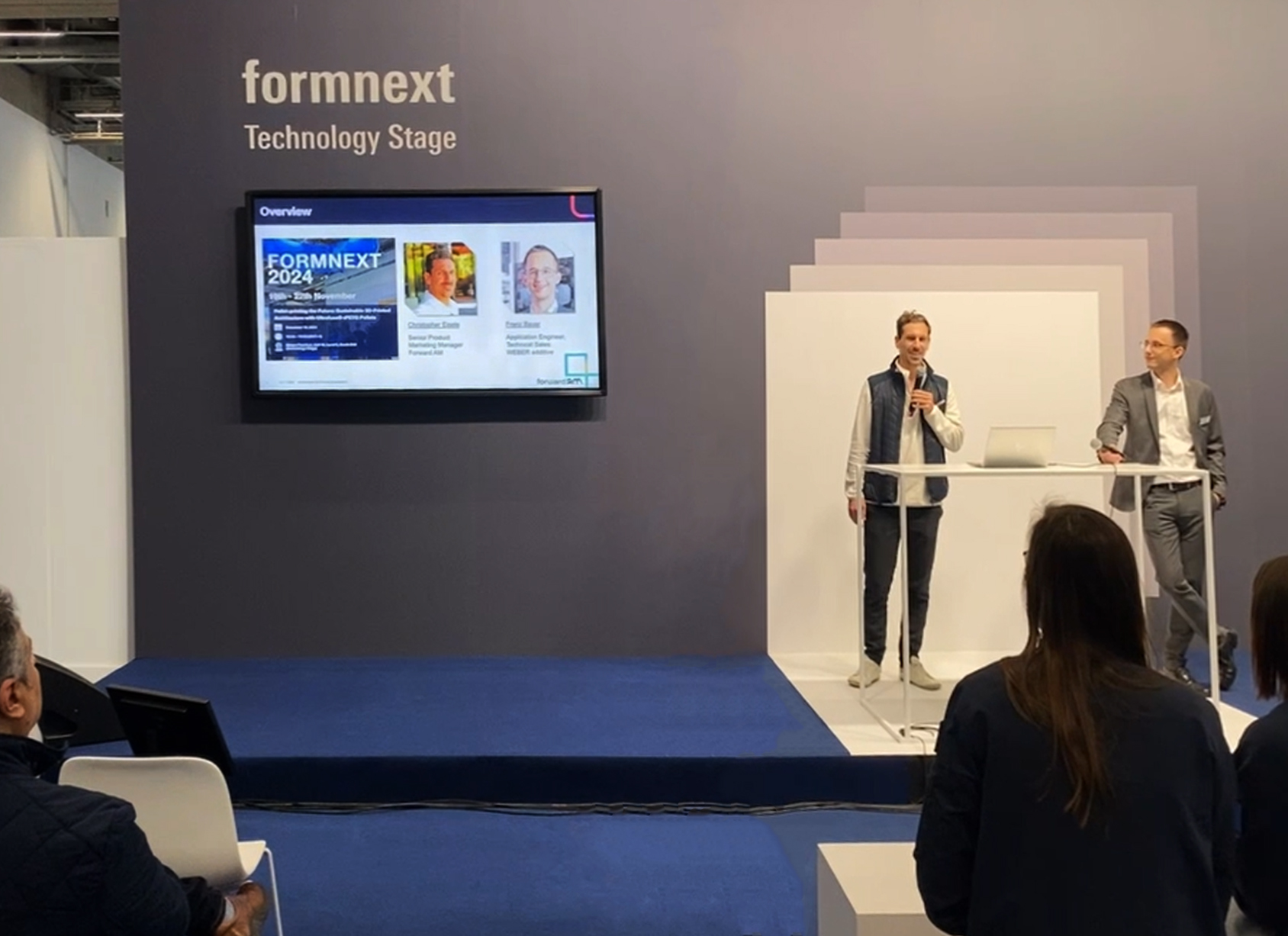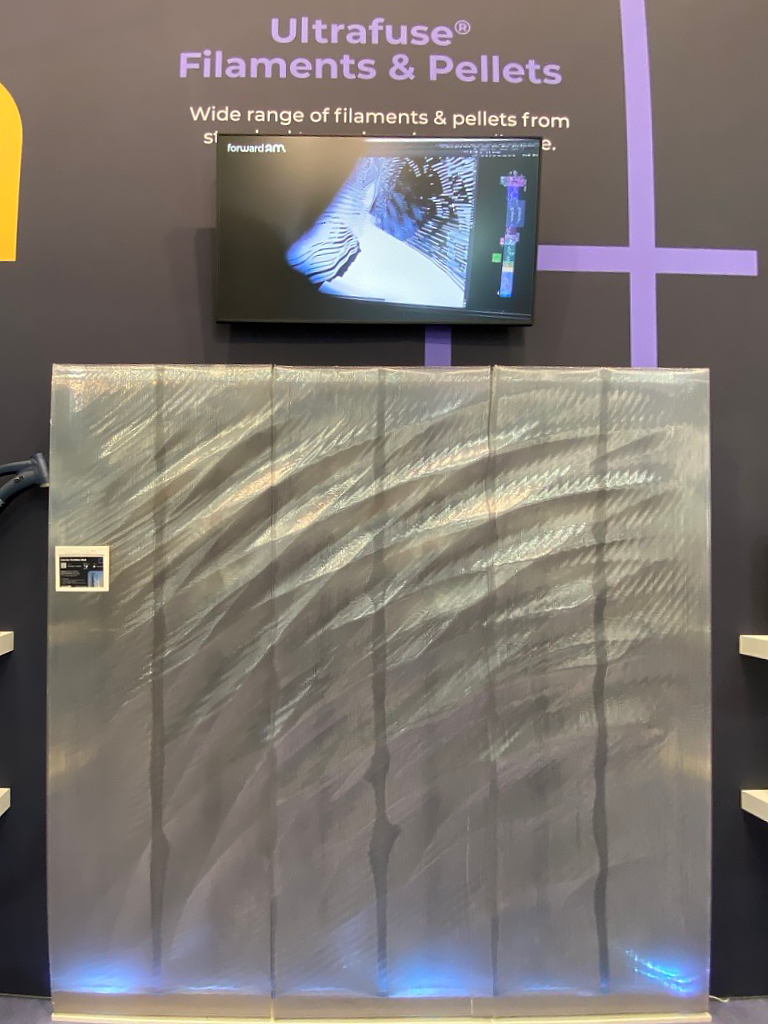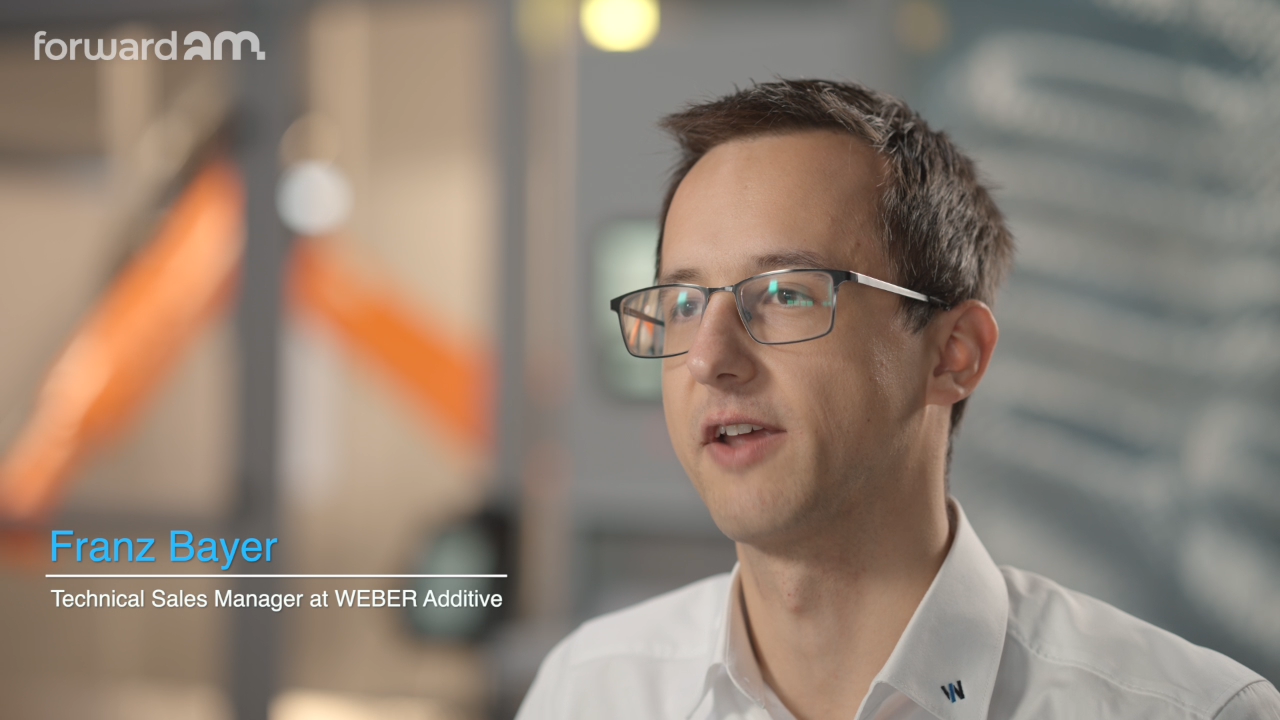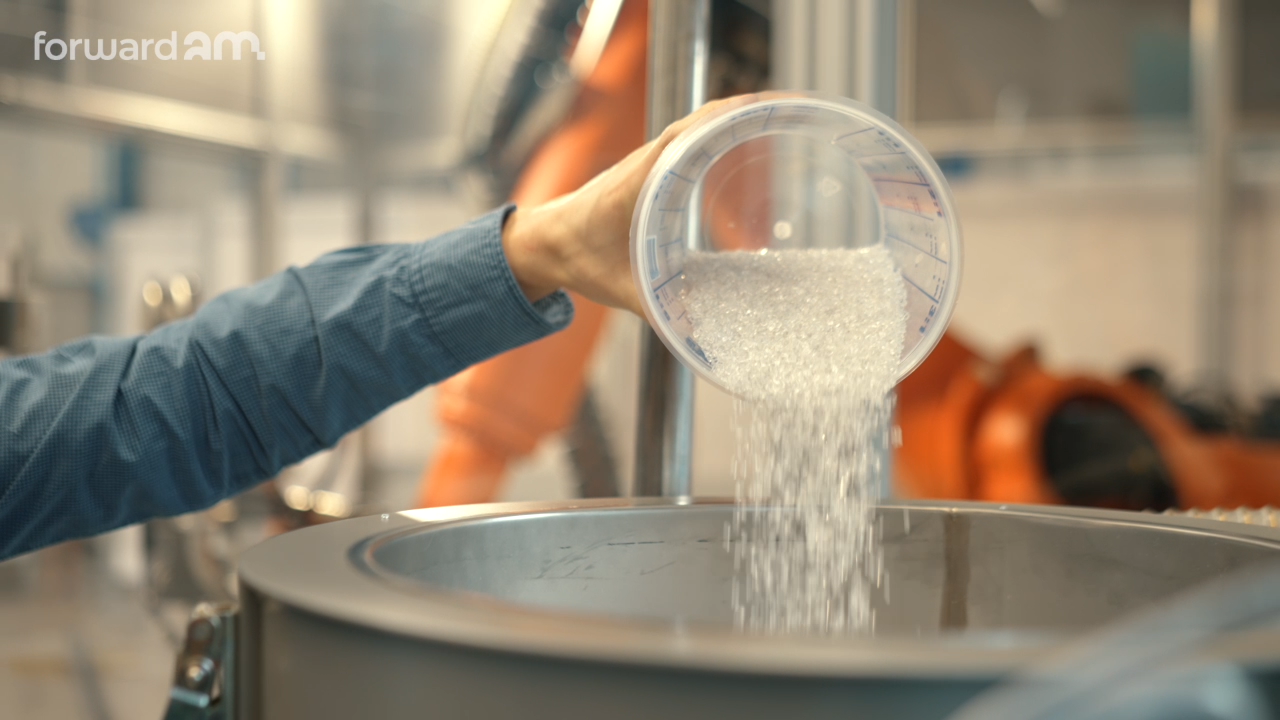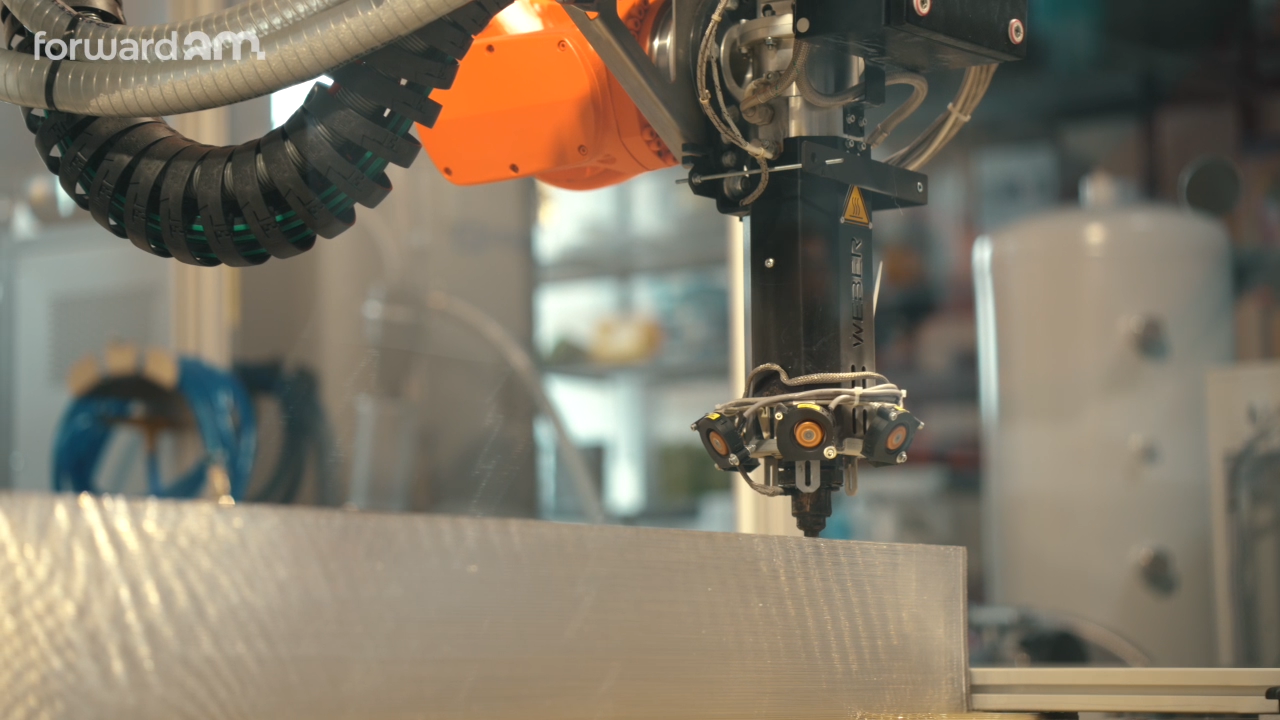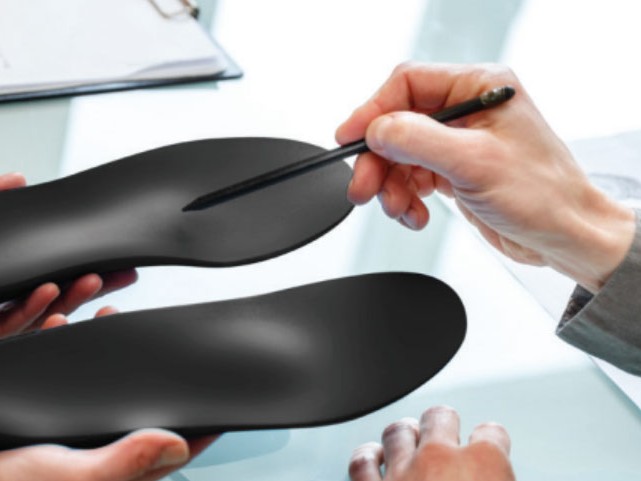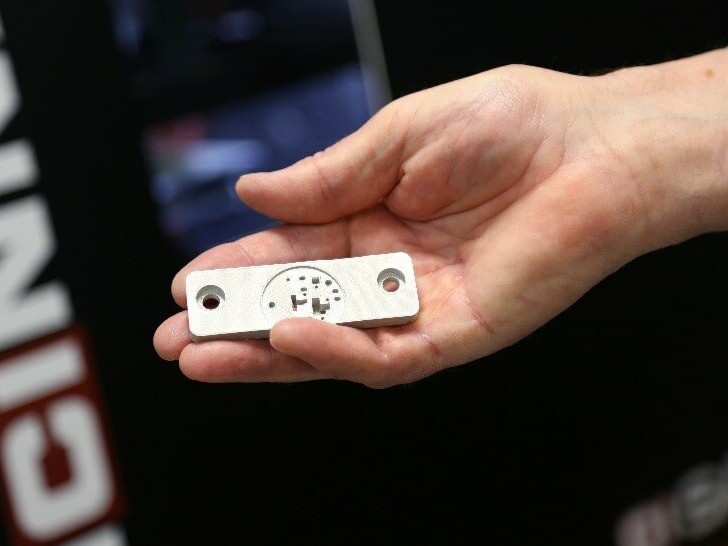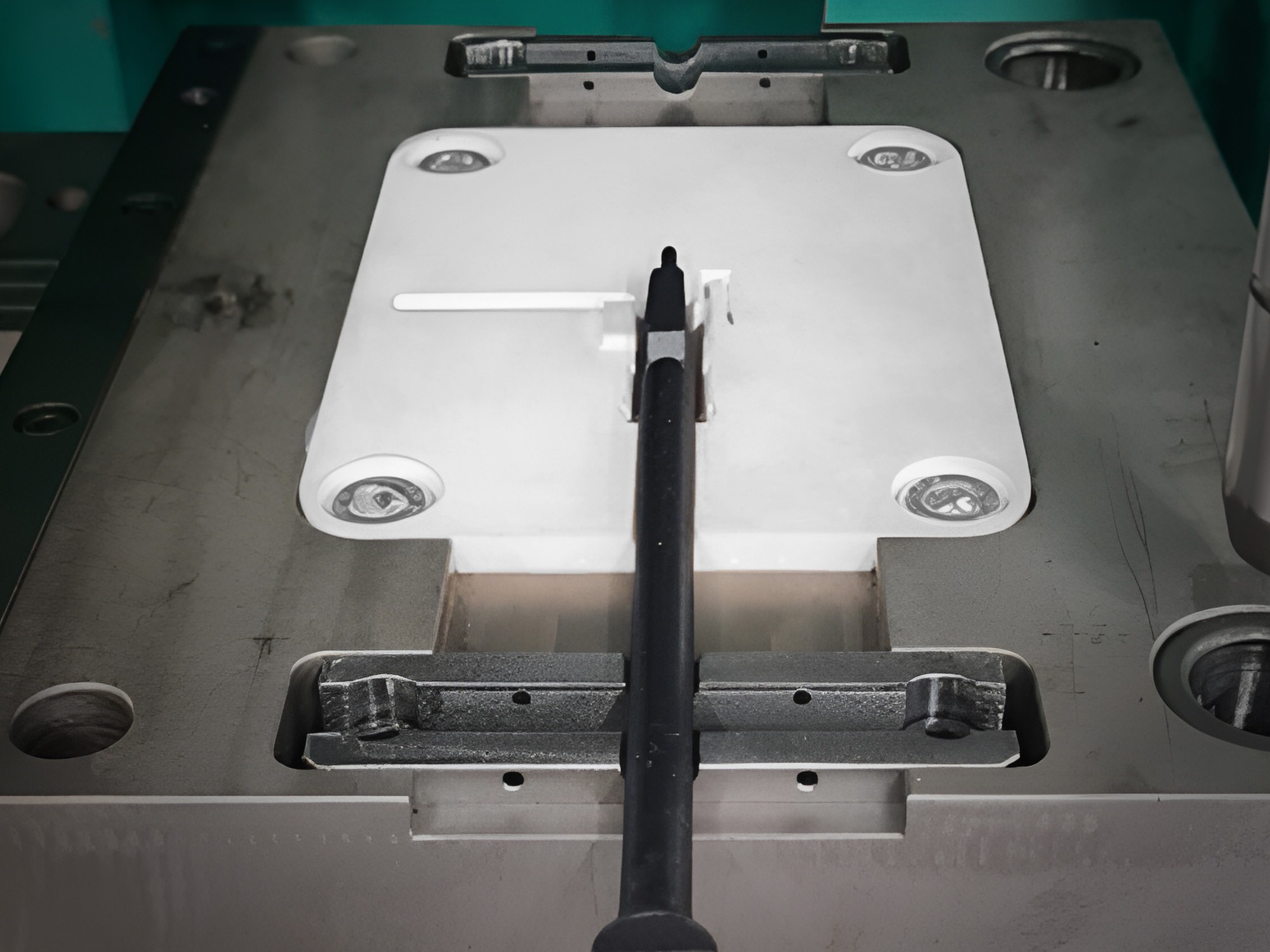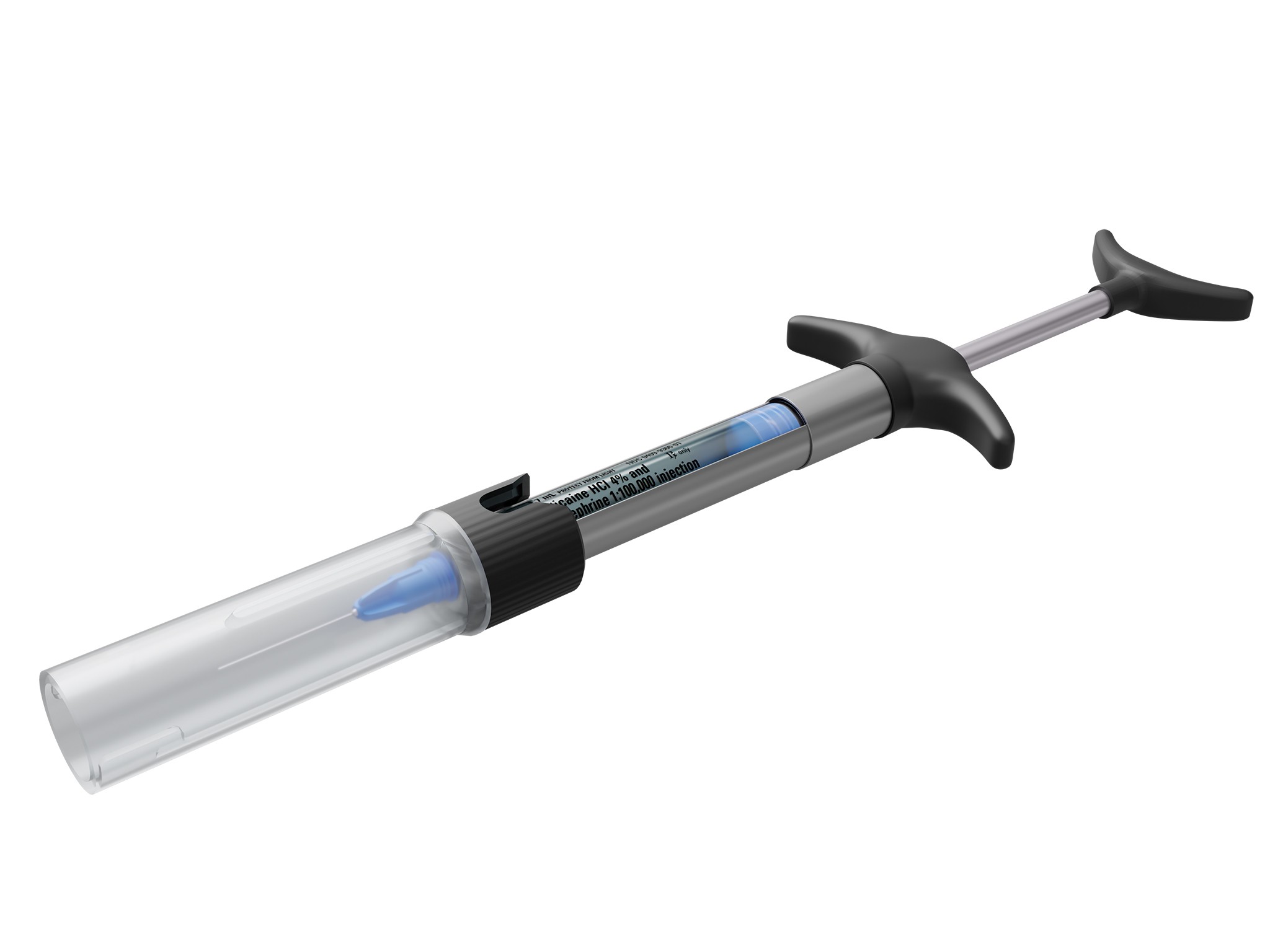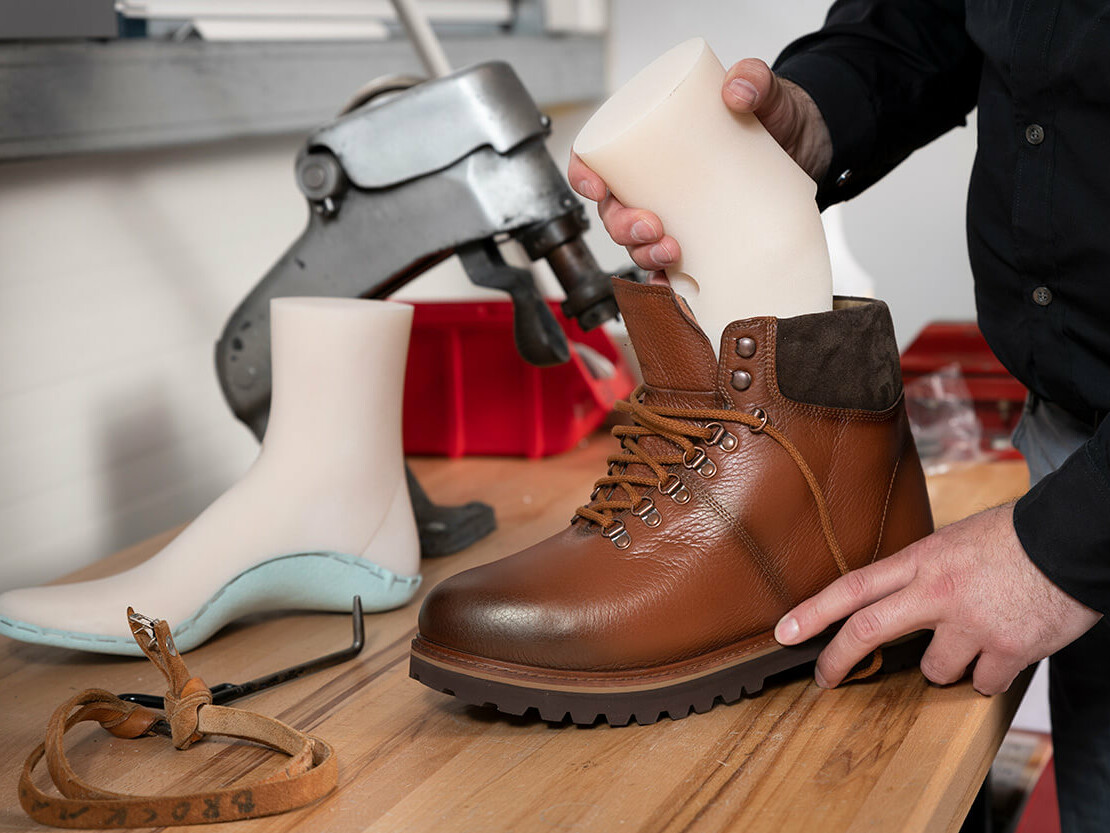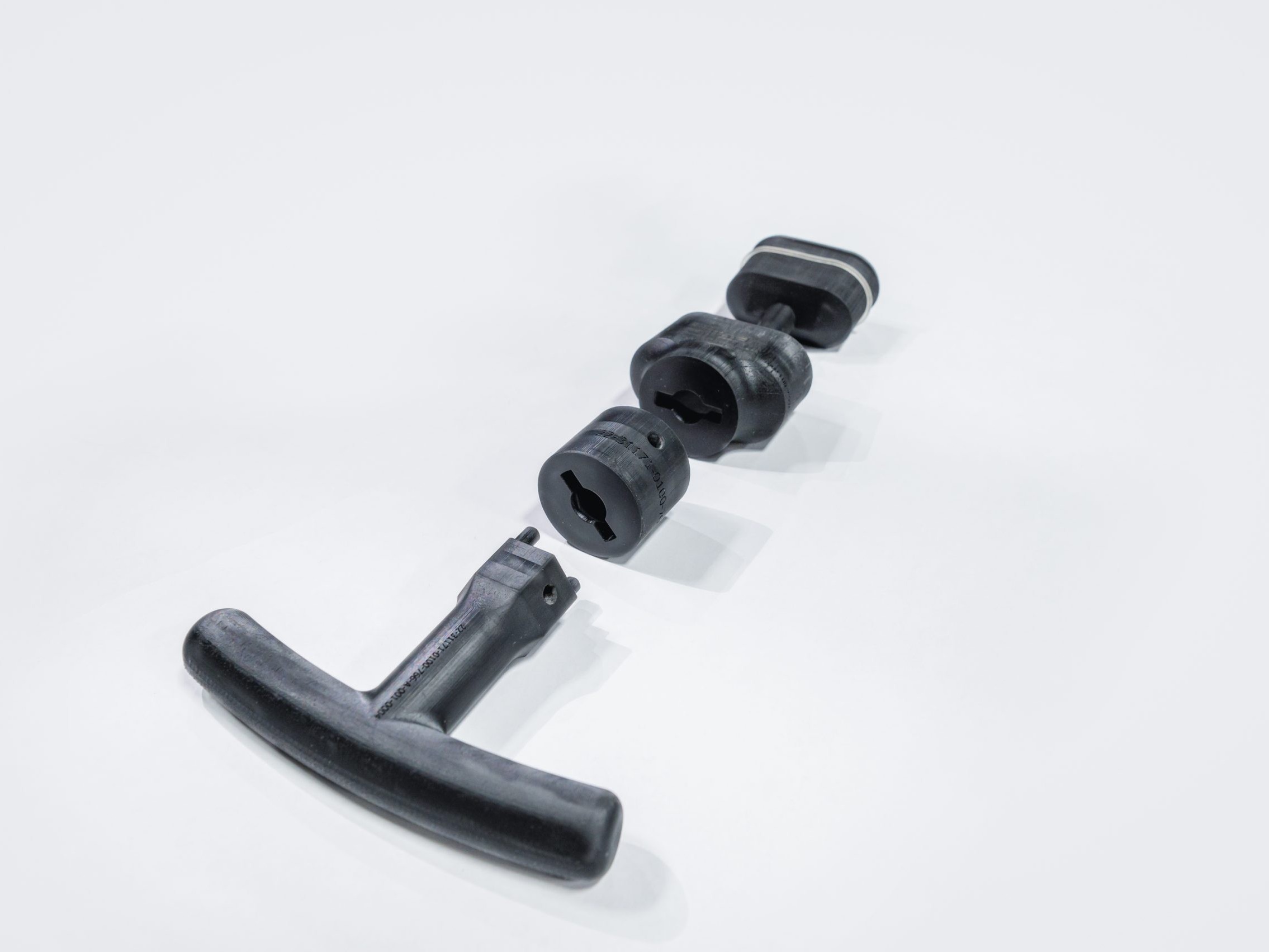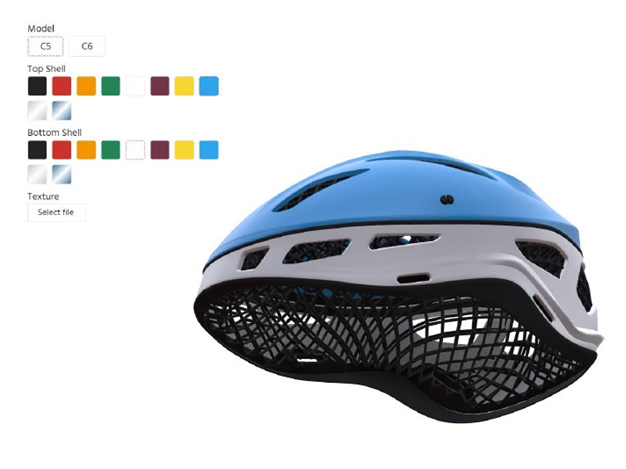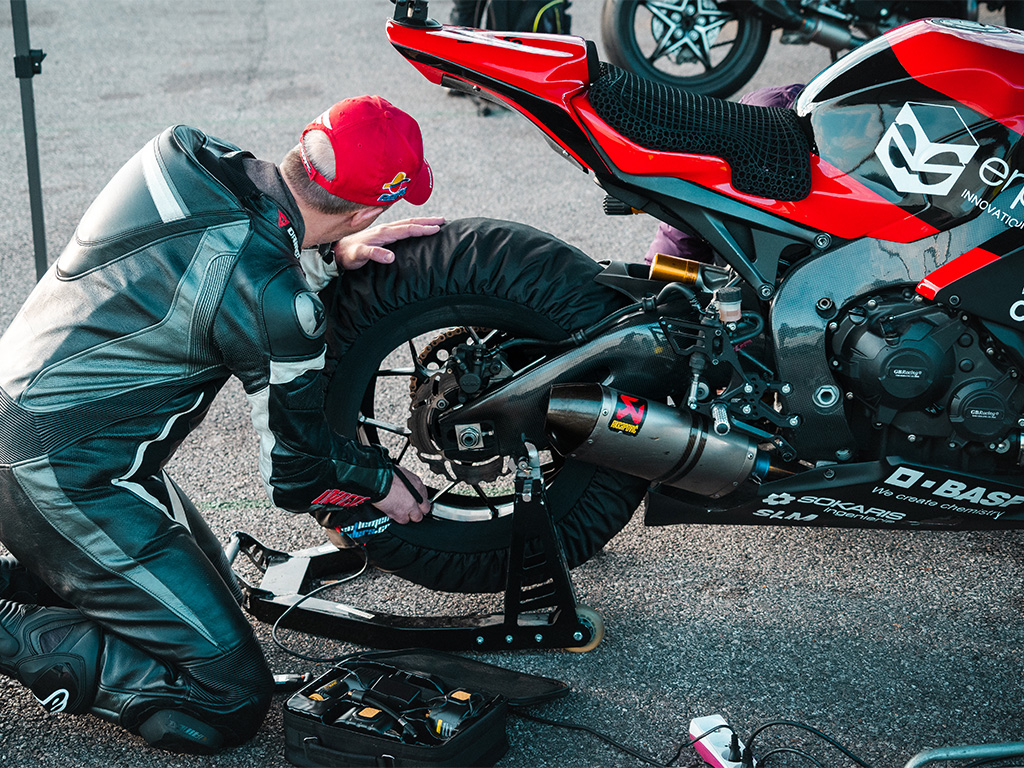Pellet Printing the Future: Sustainable 3D-Printed Architecture with Recycled Ultrafuse® PETG Pellets
As industries push for innovative, sustainable solutions, 3D printing continues to break new ground in construction and architecture. At this year’s Formnext exhibition in Frankfurt, Forward AM and WEBER additive showcased the future of sustainable design with a collaborative project that demonstrated the power of large-scale 3D printing using Ultrafuse® rPETG Pellets.
This cutting-edge collaboration resulted in the creation of two stunning translucent wall panels, printed from recycled PETG material. These panels weren’t just visually captivating; they embodied sustainability and technical innovation, signaling the transformative potential of pellet-based 3D printing.
Project Breakdown
Industry & Application
Architecture, construction and design – showcasing large-scale 3D-printed panels using sustainable materials at Formnext 2024.
Solution & Material
Ultrafuse® rPETG Pellets – recycled PETG material – paired with WEBER additive’s DXR robotic extrusion system printed by Schleicher Anlagenbau, to create translucent, sustainable panels, designed by architects Mungenast/Morroni.
Why Forward AM ?
Forward AM’s expertise in sustainable materials and close collaboration with partners enabled innovative design, high-quality printing, and a showcase of the future of large-scale additive manufacturing.
A Vision for Sustainable 3D Printing
The concept for this project emerged from the collective vision of Forward AM, WEBER additive, architects and designers Moritz Mungenast & Luc Morroni, and printing experts from Ludwig Schleicher Anlagenbau. As Franz Bayer, Technical Sales Engineer at WEBER Additive, explained, “We’re always looking for innovative ways to push the boundaries of what’s possible with additive manufacturing. This project allowed us to showcase how robotics, material expertise, and sustainability can work together to create something truly unique.”
The panels were printed from recycled PETG pellets, highlighting Forward AM’s dedication to sustainability and circular economy practices. These pellets are not only eco-friendly but also versatile, offering mechanical properties suitable for demanding applications while delivering a striking translucent finish that plays beautifully with integrated LED lighting.
The Challenge of Sustainable Construction: Transforming the Industry with 3D Printing
The construction industry, responsible for nearly 40% of global CO2 emissions, faces a pressing challenge to adopt more sustainable practices. Traditional building methods often depend on materials like glass and aluminum, which not only have significant environmental footprints but also involve complex, multi-layered production processes that complicate recycling. As Moritz Mungenast, architect and CEO of Mungenast/Morroni, explains, “Building materials and their reuse are crucial. Ideally, materials should have a closed-loop lifecycle. In the facade industry, materials are often downcycled rather than reused.”
Forward-thinking solutions, such as 3D printing with Forward AM’s recycled Ultrafuse® Pellets rPETG and WEBER additive’s DXR large-scale extrusion system, present an exciting opportunity to reimagine how facades are designed and manufactured. “With 3D printing, we can create customized designs that are like a tailored suit for each building,” Mungenast shares, emphasizing the potential to integrate insulation, ventilation, and acoustic optimization into a single component. This approach not only reduces production steps but also allows for “the use of recycled materials to create translucent facade elements,” transforming waste into high-quality architectural solutions.
Moreover, Mungenast highlights how the process bridges the gap between digital design and production: “3D printing closes that gap, allowing digital design and production to be seamlessly linked, with components ready to use straight from the printer.” By enabling localized manufacturing, the process minimizes transportation emissions, further reducing the carbon footprint.
Looking ahead, Mungenast envisions a future where the construction industry embraces circular economy principles. “At the end of their life, facades can be shredded, recycled, and printed into new facades with the same functions,” he notes. By combining sustainability, functionality, and aesthetics, innovations like these are poised to fundamentally change how we build, paving the way for a more environmentally responsible construction industry.
The Solution: The Power of Collaboration
The success of this project lies in the synergy between advanced technology and collaborative partnerships:
- WEBER additive provided their DXR robotic extrusion system, which combines decades of extrusion experience with cutting-edge robotics.
- Forward AM supplied Ultrafuse® rPETG Pellets, a sustainable material with exceptional performance.
- Moritz Mungenast & Luc Morroni contributed the panel design, leveraging his architectural expertise to create an aesthetically stunning and functional structure.
- Schleicher Anlagenbau executed the precise printing of the panels, showcasing the capabilities of WEBER’s robotic system.
The project also demonstrated how cooperation across multiple disciplines can lead to transformative results. As Bayer noted, “By integrating our extrusion technology with Forward AM’s materials and the design expertise of Moritz Mungenast, we’ve created a showcase piece that goes beyond what any of us could have achieved alone.”
Ultrafuse® rPETG Pellets: A Material for the Future
Ultrafuse® rPETG Pellets are setting a new standard for sustainable additive manufacturing. Here’s why they’re a game-changer:
- Recycled Content: Made from recycled PETG, the material reduces waste and contributes to a circular economy.
- Aesthetic Versatility: Its translucent quality allows for creative lighting effects, as seen in the Formnext panels.
- Project stability: Excellent batch to batch stability
“Pellets are the obvious choice for large-scale 3D printing,” Bayer said. “They’re cost-effective, efficient, and deliver the performance needed for demanding applications.”
From Vision to Reality
“3D printing closes that gap, allowing digital design and production to be seamlessly linked, with components ready to use straight from the printer. I envision a future where construction requires less manual labor on site, and I’m excited about the possibilities for large-scale 3D-printed buildings.”
Prof. Dr. Moritz Basil Mungenast, CEO Mungenast/Morroni, Office for 3D-Printed Architecture
Venturing into the field of On-Demand 3D Printing Services, Ludwig Schleicher Anlagenbau utilized WEBER additive’s DXR robotic extrusion system to produce the panels. The DXR system features advanced robotic technology tailored for large-scale 3D printing.
“After meeting WEBER additive a few years ago and seeing their innovative technology, it was an easy decision for us to invest in a machine for large-scale printing,” said Ludwig Schleicher Jr., CEO at Ludwig Schleicher Anlagenbau. “3D printing gave us the opportunity to provide products to a wide field of customers.”
“The DXR system’s modularity and precision allow us to handle high-output materials like Ultrafuse® rPETG efficiently,” said Franz Bayer, Technical Sales Engineer at WEBER additive. This highly modular system combines Weber’s decades of extrusion expertise with the latest robotics to enable precise, large-scale production. From furniture to automotive components, the flexibility of DXR technology opens endless possibilities for creative and technical applications.
Collaboration at Formnext 2024
The project culminated in a dual-panel display at Formnext 2024, the world’s largest 3D printing trade fair, held in Frankfurt am Main, Germany. Each panel found its place at one of the two collaborating booths:
- The front side of the panel was displayed at the WEBER additive booth, showcasing the DXR robotic system and its capabilities.
- The back side of the panel was featured at the Forward AM booth, emphasizing the material properties of Ultrafuse® rPETG and Forward AM’s role as a leader in sustainable 3D printing materials.
This dual showcase highlighted the collaborative spirit behind the project and the shared commitment to sustainable innovation.
Insights from the Experts
Share this page
Next Steps
Reference Links
- For more technical insights take a closer look at our material page: Ultrafuse® Pellets rPETG
- Here you can find additional information on Forward AM's Pellet Portfolio: Ultrafuse® Pellets
Get in touch
Do you have questions about our materials, technologies or services? Get in touch now!
